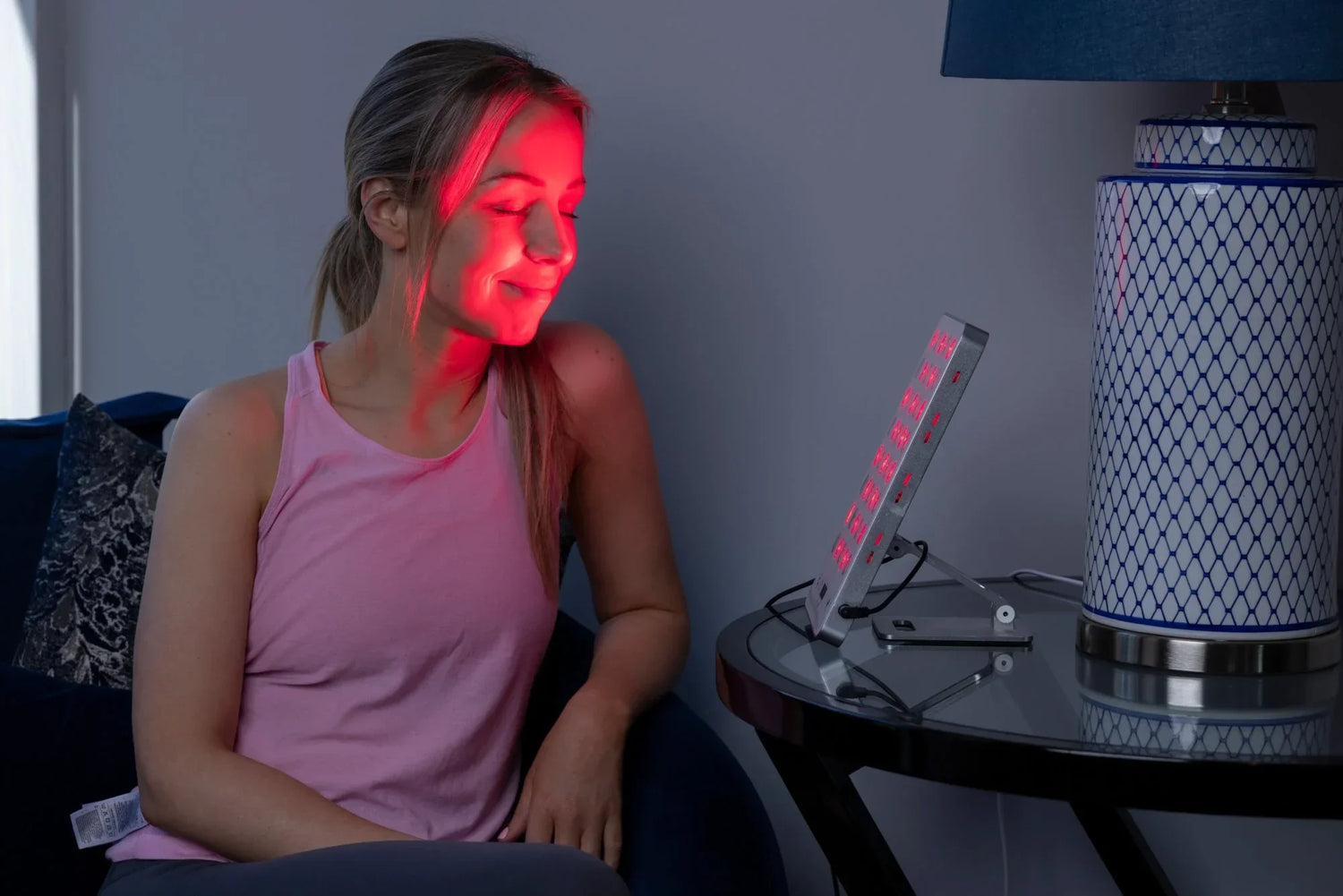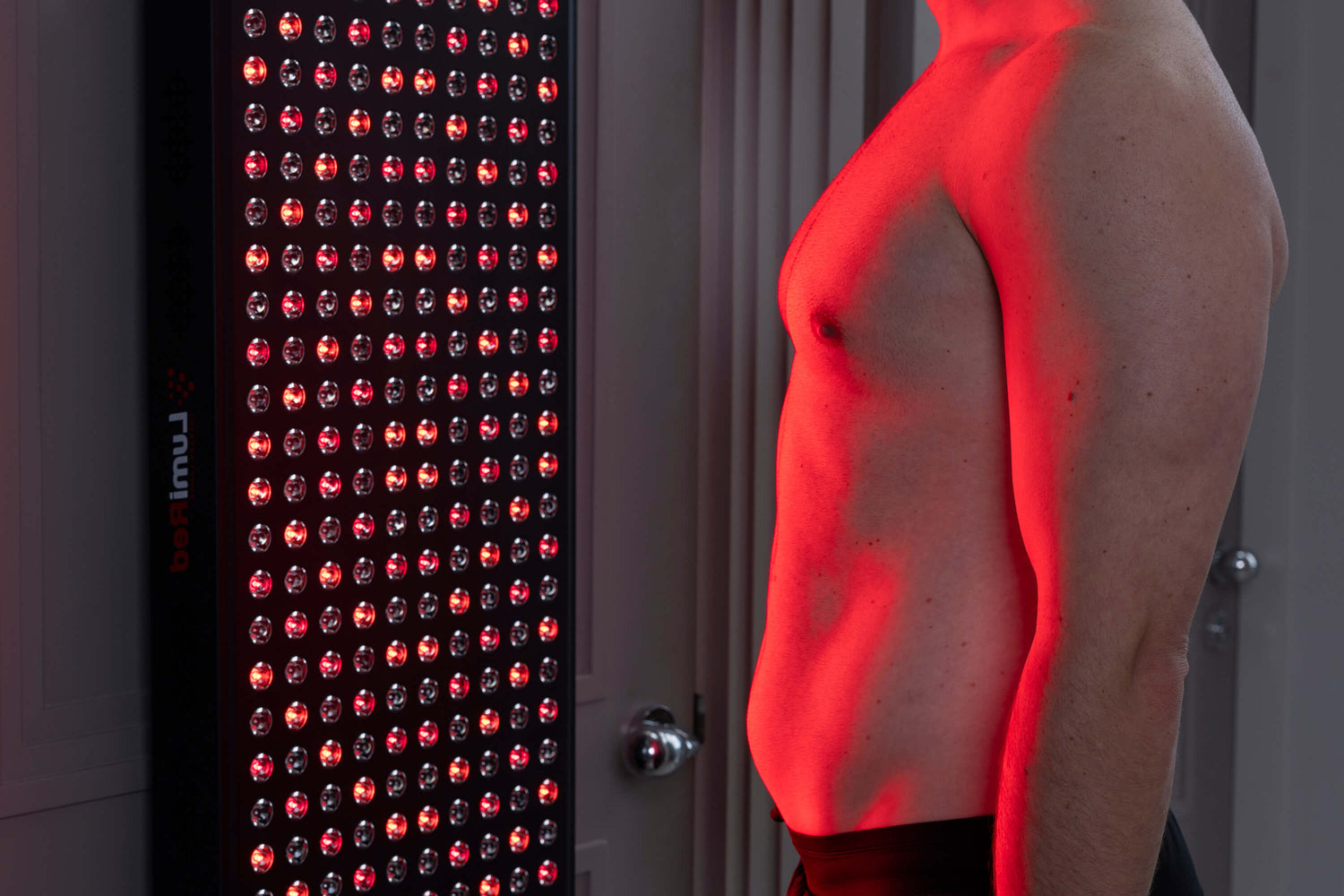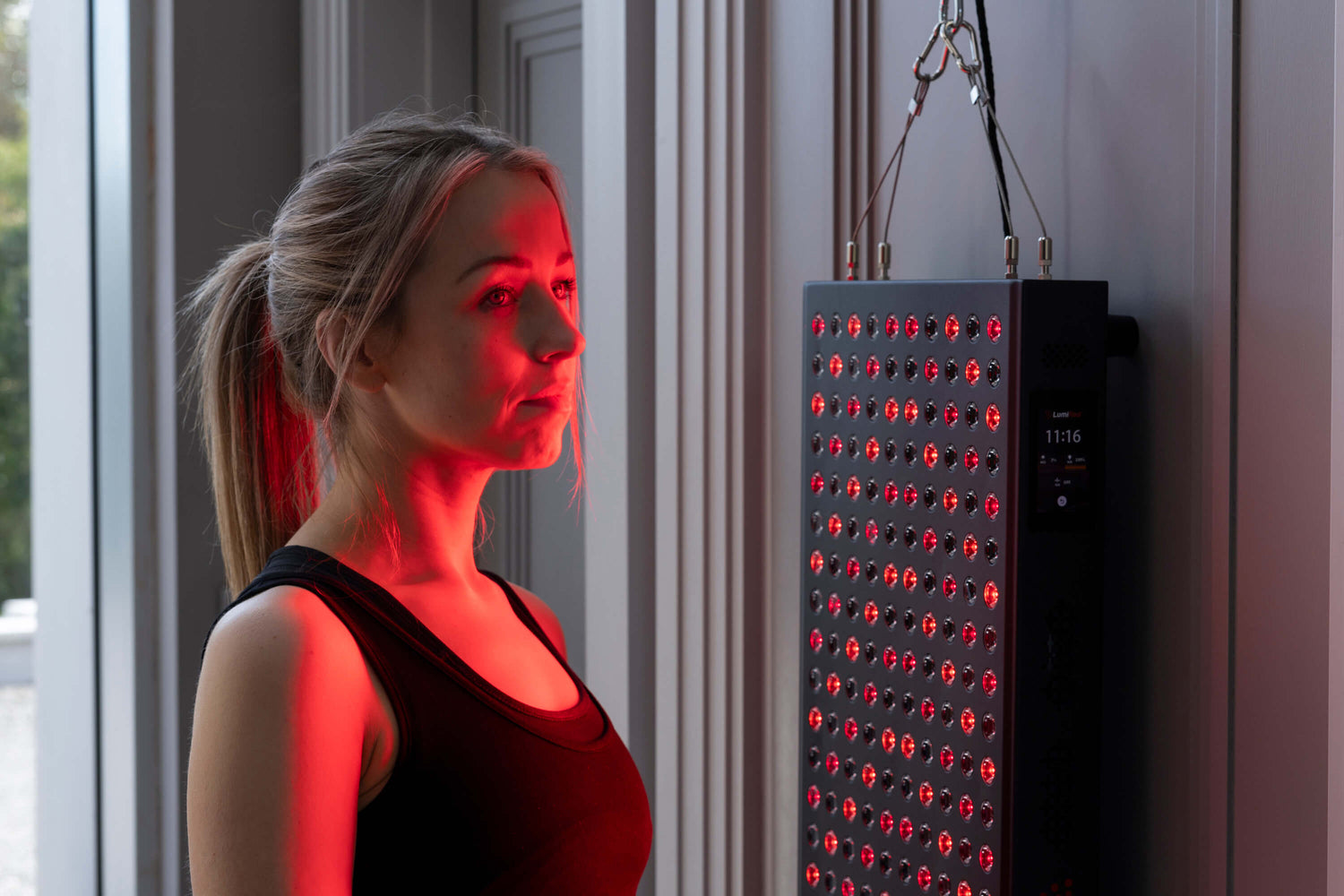The chill of winter brings short days and long nights, and cold weather is not the only thing you might find yourself dipping into. Mood and energy can take a dip as well. Shorter days and cold weather can leave us feeling tired, unmotivated, or just low, and if this sounds familiar, you might be experiencing seasonal affective disorder (SAD). To make things better, a scientifically proven, safe and gentle treatment exists that might add some light to your life - red light therapy.
Red light therapy is a new form of natural therapy that involves the use of certain wavelengths of red light and near-infrared light, which penetrate your skin and assist your cells in producing energy. Red light therapy can be used to improve mood, increase energy levels, and improve overall well-being based on an increase in cellular energy production.
Unlike regular light therapy, which typically uses bright white light or blue light, red light therapy is less harsh and still provides cellular benefits. So, how exactly does red light therapy work, and how can it be helpful for SAD? Let's find out.
Key Takeaways:
-
Red light therapy is a scientific, non-invasive treatment for Seasonal Affective Disorder (SAD) that can improve mood and energy levels by treating or eliminating symptoms.
-
Unlike traditional bright light therapy, red light therapy is easier on your eyes, penetrates deeper into the skin, and offers additional benefits like improved sleep and inflammation.
-
For best results, use a high-quality red light therapy device with wavelengths between 630-850 nm for 10-20 minutes daily, especially in the morning or early afternoon.
-
Red light therapy is a safe, effective alternative to medication for treating SAD, anxiety, and depression, making it a valuable addition to a holistic mental health regimen.
Understanding Seasonal Affective Disorder (SAD)
Seasonal affective disorder (SAD) is diagnosed as a type of depression that occurs during certain months of the year, typically during the fall and winter months, with little exposure to sunlight. SAD is thought to develop in many ways, including shifts in circadian rhythms, suppressed serotonin production, and altered melatonin levels.
Symptoms of SAD
-
Continued sadness or low mood
-
Fatigue and low energy
-
Problems concentrating
-
Increased cravings for carbohydrates
-
Social withdrawal
-
Sleep problems increased irritability and anxiety
For many people, the arrival of colder months signifies that there will be less exposure to natural sunlight, which can have significant effects on mental health. Less exposure to sunlight can lead to the need for treatment for seasonal affective disorder. Light therapy for SAD is one of the most recommended treatment approaches, and red light therapy for depression is emerging as a viable alternative to commonly prescribed therapeutic treatments for seasonal affective disorder.
Benefits of Red Light Therapy for SAD
Red light therapy provides various benefits beyond treating SAD. Some possible advantages include:
-
Improves Mood and Mental Health: Red light stimulates mitochondria in cells, which creates more ATP (energy) and can lead to decreases in depression and anxiety.
-
Improves Sleep: Red light therapy stimulates melatonin production when used before sleep, which is critical for sleep cycles and quality of rest.
-
Increases Energy: Red light therapy improves energy by improving cellular functioning and limiting fatigue.
-
Supports Skin Health: This therapy has been widely used to improve skin tone, reduce wrinkles, and enhance collagen production, making it a favourite in the beauty industry.
-
Alleviates Anxiety and Stress: Red light therapy has been linked to lower cortisol levels, reducing stress and anxiety levels.
-
Regulates Circadian Rhythms: Since SAD is partially triggered by disrupted circadian rhythms, red light therapy helps reset the body’s natural clock, making it easier to wake up and stay energised throughout the day.
How Does Red Light Therapy Work for SAD?
Red light therapy is beneficial because it exposes the skin to low-level wavelengths of red and near-infrared light. Here is how it works:
-
Increase the level of serotonin and dopamine, which are two important molecules that are responsible for improving mood.
-
Regulate melatonin levels, thereby improving sleep.
-
Reduce oxidative stress and inflammation in the brain, which results in improved mental health and cognitive function.
-
Improve circulation to the brain, ensuring oxygen and nutrients efficiently get to the brain.
Many people turn to SAD lights or bright light therapy, but does light therapy work? The answer is yes, and red light therapy is proving to be an effective, gentler alternative. Unlike traditional bright light therapy, which can sometimes cause eye strain, headaches, or agitation, red light therapy provides a comfortable experience with deep tissue penetration for maximum benefits.

Choosing the Right Red Light Therapy Device
It's easy to feel overwhelmed when there are so many choices In selecting the best red light therapy for depression device. Here are some specific things to consider:
-
Wavelength Range: The best devices fall between 630-850 nm. This is the most effective and deepest penetration, which is achieved by stimulating the mitochondria found in your body.
-
Power Output: High power output offers the most penetration and the fastest results, lessening the effective time of each session.
-
Treatment Area: Will you need a full-body panel, a small desk lamp, or something portable so you can take it on the go?
-
Quality and Safety: FDA-approved and independently reviewed brands are a retailer's best fit for quality and safety.
-
Ease of Use: Some devices have adjustable settings for reliable results and a customised effect. This can range from adjusting how often to turn the device on to favouring intensity and treatment duration.
If you’re in the UK, you might be looking for the best SAD lamps UK has to offer. Many red light therapy lamps are available online, offering high-quality solutions tailored to your needs.
How to Use Red Light Therapy for Best Results
To maximise the benefits of treatment for SAD, follow these simple steps:
-
Staying Consistent is Important: Use your red light therapy unit every day for anywhere from 10 to 20 minutes.
-
Placement is Important: Your distance from the light source should be between 6-12 inches for optimal exposure.
-
Timing is Important: If you're mindful of your circadian rhythm, using light therapy in the morning or early afternoons can help to improve your mood.
-
Give it Time: Some people notice improvements within days, while others will experience benefits after at least a few weeks.
-
Use in conjunction with other therapies: if you can combine red light therapy with outdoor walking, exercise, and a good diet with the therapy, you will likely experience even better results.
Addressing Common Concerns
Does light therapy work for anxiety? Yes! Red light therapy has been found to reduce stress levels and promote relaxation by lowering cortisol production, making it beneficial for those struggling with anxiety.
Can red light therapy be used alongside other treatments? Of course. Countless individuals use red light therapy in conjunction with exercise, pharmaceuticals, cognitive behavioural therapy (CBT), or vitamin D therapy to provide overall support to mental health.
Is it even safe? Yes! Red light therapy is a non-invasive, drug-free therapy with little to no side effects. Unlike standard anti-depressants, it has no risk for dependency, therefore making it a very attractive therapy to use long term. Consulting with a medical professional before beginning any new therapies is always a good idea.
Red Light Therapy vs. Traditional Light Therapy for SAD
Traditional light therapy, commonly known as light therapy for SAD, uses bright white or blue light to replicate exposure to natural sunlight. Traditional light therapy is effective; however, many people find the bright lights unpleasant or irritating to their eyes and hard to endure for long periods.
Red light therapy is also a more pleasant treatment than the methods discussed already because it allows for deeper tissue treatment without brightness. Moreover, red light therapy can be viewed as a further improvement over just impacting mood because it not only impacts mood but also helps with maintaining cellular health and reducing inflammation, all beneficial to wellness, providing a more comprehensive treatment.
Conclusion
If you're feeling the weight of winter ahead of you, red light therapy could be a natural and effective solution to your seasonal affective disorder (SAD). The benefits of red light therapy can include improved mood, increased energy, better sleep, and decreased stress. It's lighting the way for happier, healthier lives! Whether you're looking for SAD Lamps UK, red light therapy benefits, or the best red light therapy for anxiety and depression, finding the right device could be a great choice.
This winter could be different; enable the power of red light to bring you into a brighter and more vibrant life. Successfully incorporate red light therapy into your life to regain your energy, elevate your mood, and take control of your mental health throughout the year.
LumiRed For Your Well-Being
Take control of your well-being with LumiRed, a cutting-edge red light therapy solution designed to combat Seasonal Affective Disorder (SAD) and boost your mood naturally. Experience deeper sleep, enhanced energy, and improved mental clarity—all with a safe, non-invasive treatment. Light up your life today with LumiRed—because you deserve to feel your best.




